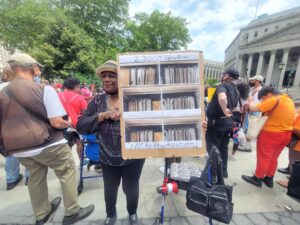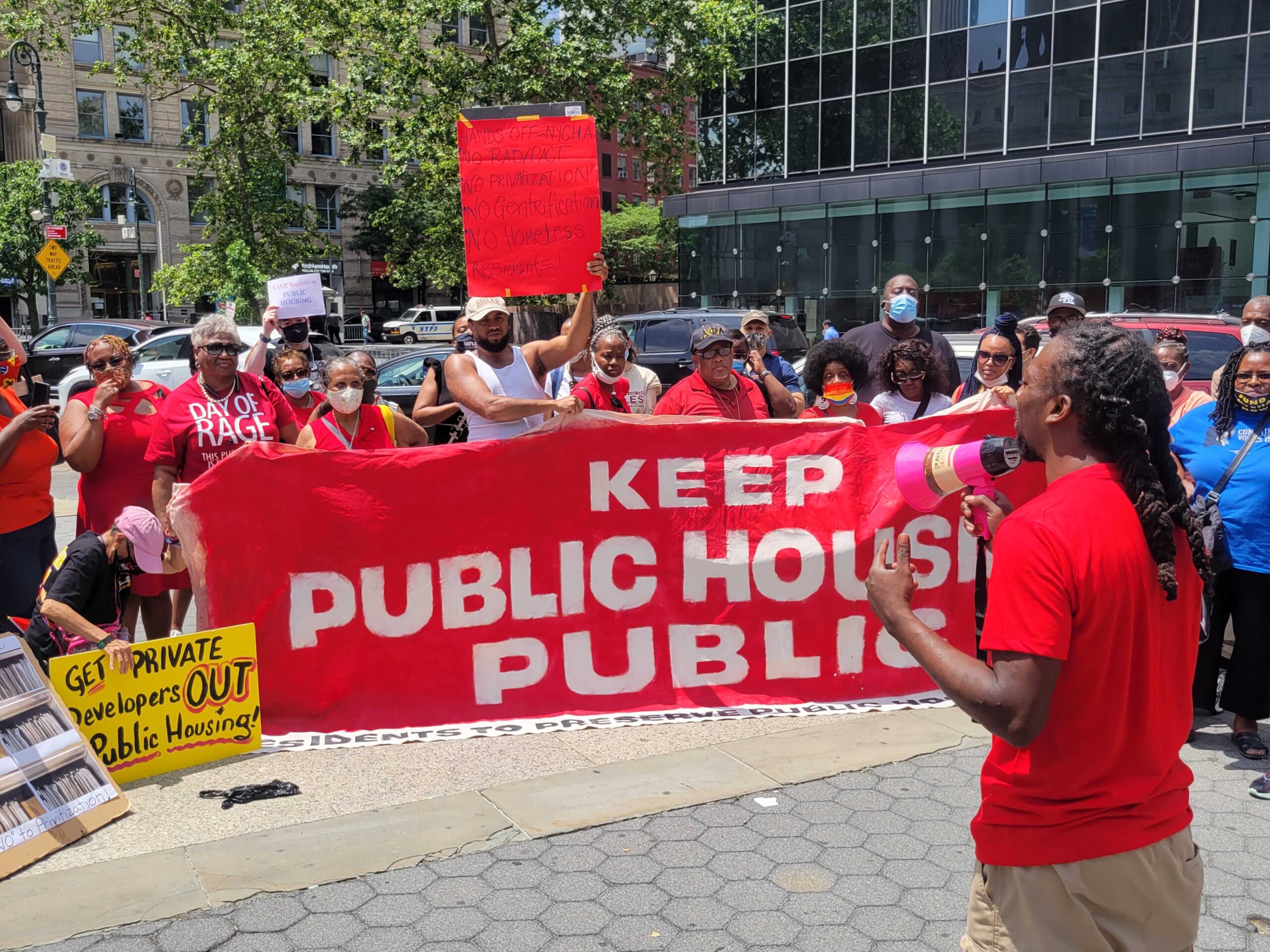NYCHA residents continued to let Mayor Bill de Blasio know they’re angry with his choice for Housing Authority CEO Gregory Russ, and vented their frustration at proposed policies they suspect will lead to their displacement.
About 100 residents rallied across from 26 Federal Plaza in lower Manhattan on June 10, denouncing Russ’s Blueprint for Change, a proposal that calls for privatizing 62,000 NYCHA apartments citywide in an attempt to help pay for $40 billion in urgently needed repairs and upgrades.
“Greg Russ was paid a substantial amount of money from the mayor to come to New York…because HUD [Housing Urban Development] offered him $175,000 to take that job,” not including hundreds of thousands in perks, said Ronald Topping, tenant president at John Adams Houses and a frequent outspoken critic of the Blueprint. He added that Russ’s main objective is to “privatize public housing in New York City.”
Under the “Blueprint,” all the city’s public housing would be converted to Section 8, which would theoretically trigger both private and federal funding to pay for repairs. But critics of the plan object to the part that calls for the creation of a Public Housing Preservation Trust to distribute capital funds, interpreting that measure as a form of privatization. The members of that Trust would have the authority to elude NYCHA oversight during the process.
NYCHA’s collected about $3.8 billion in 2020, just over a quarter of that from tenant rents. The federal government contributed $2.2 billion, or 57 percent of the total, while other revenue included $262 million from the City and $360M from other sources. The Authority’s total expenditures were about $3.7 billion.
Reginald Bowman, a senior member of the Citywide Council of Presidents, which includes NYCHA tenant leaders citywide, suggested the City scrap the Blueprint for Change and allow tenants a more extensive say in devising ways to finance public housing.
NYCHA’s present plan under its current leadership “is not a real plan that will improve the quality of life of public housing in the city of New York anytime soon,” said Bowman, adding that “the future of public housing belongs in the hands of the residents, the elected officials, the city of New York and the federal government. [They all] need to sit down and have a real commitment and collaborative plan to create a future plan that’s going to actually create a new public housing and restore the infrastructure of the developments as they are existing now.”
One Brooklyn housing advocate shared that view.
“There needs to be a representation of the 500,000 plus people that are hardworking everyday individuals that have not only gained the experience of being a tenant, but have the experience to give back and have really risen above the occasion to share the importance of the NYCHA story,” said Jamel Henderson, chapter organizer for a New York Communities for Change chapter in Crown Heights and Bedford Stuyvesant.
Henderson is hopeful that a new mayoral administration will scrap the blueprint, and see to it that the City ramps up its financial commitment to public housing without resorting to privatization.
“From our security systems to our elevators, for our seniors, to combating led and paint poisoning, as well as making sure that our community centers, our recreational spaces for our youth and young adults are safe and that we are able to live accordingly, just like everyone else.”

Ronald Topping vows the rallies and sustained pressure on the mayor will continue until the City changes its mind about the blueprint, and urges the general public to join NYCHA residents in opposing it.
“We have our zoom calls from 3-5 [PM] on Sunday,” said Topping. “They could be a part of the planning that can be a part of the development and how we are trying to stop prioritization here in New York City, in public housing.”
He believes momentum is growing.
“We’re going to continue to organize until we get not only verbal expressions, but get signatures from the public,” he added. “People are signing that they’re going to support us, staying with us and be a part of us.”

